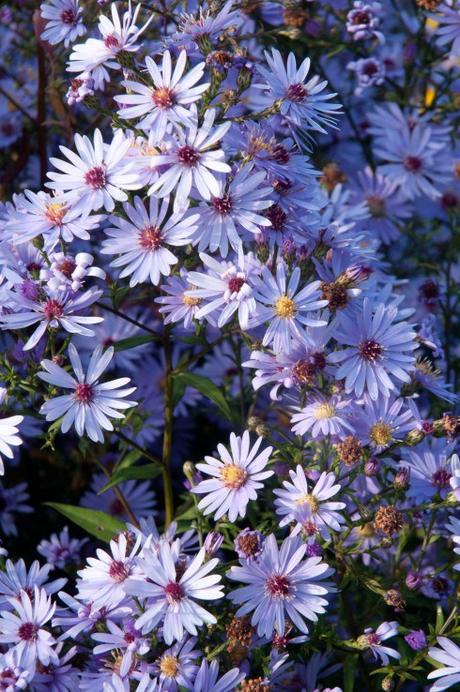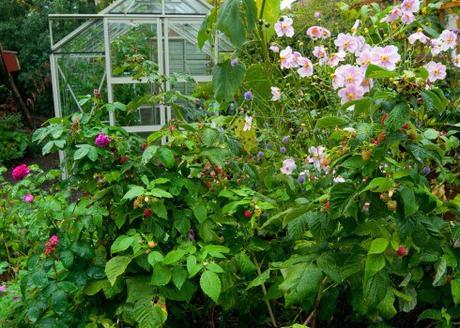
Utopian dreams of a back garden potager have been rather crushed this season by the vigour of my ‘Polka’ raspberries. I’m not saying that I don’ t love the fact that I can pop out in my pajamas to pluck a few tasty berries for breakfast, but when space is tight in my petite urban patch, these autumn raspberries have been pushing their boundaries somewhat, crowding out roses, sedums and tulbaghias in their wake.
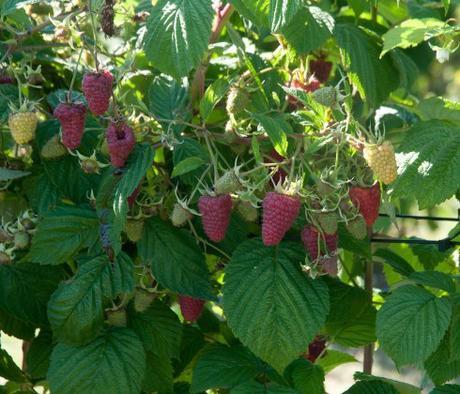
On a recent trip to East Malling Research Station (courtesy of Lubera), we spent a blissful sunny afternoon tasting row upon row of raspberries in their test fields. And one of the topics we did discuss (as well as the fantastic breeding programme at EMR) was the need to protect other plants form raspberries by placing barriers (about a foot deep) around them if you want to keep them contained. Even in my front garden, which is more allotment style planting, these enthusiastic growers have romped through what once was the asparagus bed and I’ll need to cut them off at the pass before they continue their journey into the herb patch. Not quite sure what I’m going to use to do this. Sheets of slate perhaps or length or two of steel? (Lizzie from Pugg Meadow Plants, below, suggests root barrier which she uses for bamboo, so I’m going to give this a try).
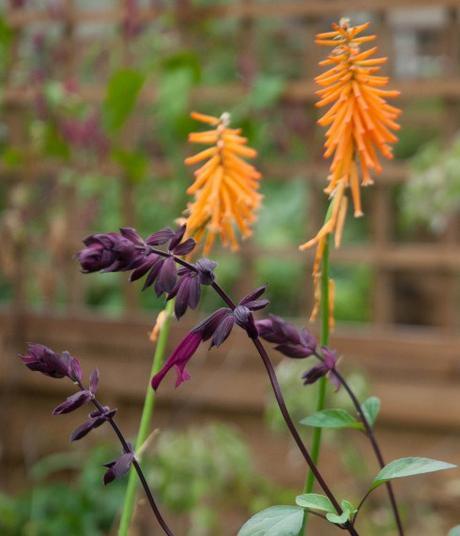
Great Dixter Plant Fair, with its top notch nurseries from the UK and Europe, has been very timely and this weekend I’ve found a few treasures to fulfill my re-design. Above is the gorgeously delicate orange Kniphofia ‘Light of the World’ from Edulis which shines out like a glowing torch on a dull autumnal day and will contrast beautifully with this just about hardy (in London) Salvia ‘Love and Wishes’ from Dysons Nurseries. Seduced by its rich hues and very long flowering period (June to November, yes indeed), I shall overwinter it for its first year in the greenhouse, then it will have to fend for itself. Fingers crossed.
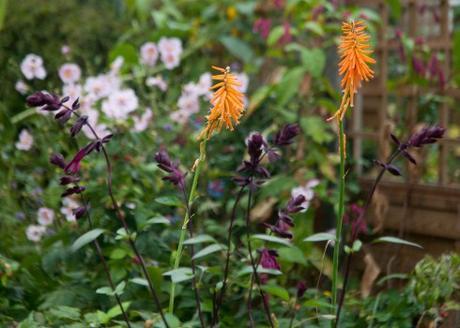
Both seem to sit well in color and texture with the softer and brighter pinks already flowering at this time of year in the garden and I’ll just have to get dressed before I gather in my raspberries next year (oh, for an extra half an acre!).
